thePROGRAM
WHAT TO KNOW
Admission | A place for exploration and growth as a dancer, technician, artist and person.
Dancers accepted into thePROGRAM are nurtured, encouraged and challenged as the eXit SPACE faculty assists in their development and dedication to dance. Dancers involved in thePROGRAM are students who are serious about their commitment to dance. Many are committed to pursuing undergraduate studies in dance, pre-professional and/or professional careers in dance. Others are driven by their soulful passion for the art of dance and seeing it through to their greatest capacity no matter the long term outcome.
Auditions | 2025-26 Season
May 3 & May 10, 2025
2:00 - 4:00p Audition
Intermediate/Advanced
May 3 & May 10, 2025
4:00 - 7:00p Audition
2024-25 Audition Flyer
How to enroll and what to expect:
- Dancers ages 8 - 17 are encouraged to audition.
- Dancers with 1-4* years experience should register for the Beginner/Newbie Audition.
- Dancers with 5 or more* years of training should register for the Intermediate/Advanced Audition.
- Register for the audition by purchasing the Audition Fee via Dance Studio Pro.
- Pre-registration is required ♢ Sign Up
- Following your dancer's registration you (the parent) will receive an email with audition info including location, a dancer questionnaire, and confirmation of audition level and time.
- Dancers should arrive prepared for ballet; hair secured neatly away from face, leotard, tights, and ballet slippers. Warm ups are allowed until the audition begins.
- Dancers should bring their printed Dancer Questionnaire, change of attire for the modern/jazz portion of audition, and a water bottle.
- Auditions will begin promptly and end on time.
New to eXit SPACE? CREATE DSP ACCOUNT
REQUIREMENTS
PROGRAM students are required to enroll in:Ballet (two classes per week)
Modern (one class per week)
Jazz (one class per week)
Elective Classes (choice of at least one): Pointe, Pre-Pointe, Hip Hop, Acro/Progressions, Contemporary, Leaps & Turns, and Tap
The PROGRAM dancers rehearse one to three times per week depending on their company placement. Average weekly time commitment is approximately 6-14 hours.
There are four companies in thePROGRAM; Cadet, Squad, Junior, and Senior. Dancers are placed in a company based on their audition, technical and performance skills, potential as we view it, and work ethic. In general, the Cadet Company is the most beginner group, Squad and Junior are intermediate, and Senior is the most advanced. Each company has unique rehearsal and performance requirements and therefore separate tuition structures.
DETAILS
Company RehearsalsOnce per week, one hour rehearsal (scheduled between 4pm-9pm Mon-Thurs). Specific times TBA
One to four times per month Fridays 3:30-6:30pm and/or Saturdays 9:00am-12:00pm
Example Season
Guest Speakers – Nutrition and Body Image, Self-Care, and Professional Development
Mentorship Program – each dancer is assigned a faculty mentor for the season
Team Building Events
takePAUSE Oct 16 & 18 (performance)
BOOSTmeUP (classes and performance) January 6-9, 2022
New York City Dance Alliance January 14-16, 2022
Dance Makers (convention and competition) Feb 12-13, 2022
RiseUP (performance) March 5-6, 2022
In-Studio Workshop with Master Teachers TBA
eXit SPACE Family Matinee Series April 23, 24 & 30, May 1
Student Showcase May 21, 2022
Tuition | Contact Information
Tuition$2895/season (or $289.50/mo over ten months)
Includes weekly Company Rehearsals, select Friday/Saturday rehearsals, all performances, conventions, and events.
Additional costs: participation in optional opportunities, costumes, and team apparel.
Program Tuition does not include technique class tuition
Scholarships
eXit SPACE offers numerous partial scholarships for thePROGRAM tuition. More information will be given at the Parent Meeting.
Questions
Please direct any questions regarding thePROGRAM to Marlo Martin (Artistic Director).
We require the information to ensure safety and a positive experience for your dancer.
- Personal Information should be for the dancer
- Emergency Contact Information should be Parent/Guardian names and contact information.
- Multiple Dancers? You can register using the same email to login but use a DIFFERENT password
- Complete set up for one dancer and make sure you have logged out of the account before beginning setup for another dancer
It is important you remain subscribed to email reminders and notifications so you can be informed about the program during the year.
Thank you!
The end of year student showcases will be held the final week of the season.
Please review the contract for important policy information
Please Note:
- Contract and non-refundable enrollment fee are required to secure place in class and to participate in the young dancer program.
- By enrolling your dancer, you are agreeing to the terms of the contract, even if it is not yet signed/on file.
- Cancellation or withdrawal of enrollment is available through August 15, 2023 with full refund of any paid tuition.
- After August 15, 2023 all paid tuition is non-refundable with the exception of class cancellation by the studio or for medical reasons
- Mid-season withdrawal from the program will be subject to a $75 fee. Tuition processed through withdrawal date is non-refundable. No further tuition will be processed.
- Tuition covers the cost of your dancer's class for the entire season. Our season is 36 weeks long and we provide installment payments as a convenience, broken into periods of nine weeks. Pro-rating of tuition is calculated based on the week during the season your dancer joins the class.
MindBody can create some confusion -- Please be aware:
- Clicking "View Schedule" in the MindBody pop-up may not show the class because the start date is too far in the future.
- Accurate class days and times, as recorded in MindBody, are listed below
*Tot Dancers enrolling in Caregiver & Tot must meet the minimum age requirement of 18 months old by the beginning of the season, September 1.
- Welcome exploration: Dancers travel through the room with props, exploring the weekly concept.
- Hello song & Nursery Rhyme BrainDance: Dancers and grownups sing hello before transitioning into an 8-song series with corresponding movements rooted in foundational infant development patterns to wake up the brain. Singing and nursery rhymes build foundational phonological awareness while the BrainDance introduces neurological re-patterning; increases blood flow to the brain; and enhances coordination, core support, and alignment.
- Creative Exploration: Each week, dancers explore an element of movement related to space, time, energy, body, or action with structured, teacher-led improvisation to build perceptual and motor development and early mathematical/spatial thinking. Use of varying props and instruments integrates sensory stimulation, coordination skills, and rhythm.
- Circle dance: Dancers and grownups gather in a (standing) circle for an opportunity to reconnect in space, build community, practice rhythmic movements, and enjoy traveling around, into, and out of the circle. This portion of class embeds pre-dance skills alongside spatial thinking related to directionality and positioning.
- Rest & stretch: Dancers and grownups connect with touch and vestibular action during this low-sensory cool-down mid-class. Children get sheets to lie on and may choose to get a swing (like a hammock!) and/or a pull through the studio. Dancers transition out of rest with a brief, imagery-rich stretch series. This portion of class reduces overstimulation, re-centers dancers, connects them with their caregiver, and instills critical self-regulation skills.
- Obstacle course: This portion of class is intended to be a joyful and stimulating opportunity for dancers to travel through space and obstacles while practicing pre-dance steps that align with 2-3 yr physical motor milestones including: jumping on two feet (plié & sauté), galloping, spinning (vestibular sense), marching, tiptoeing (balance), crawling on hands and feet (upper body strength and cross-lateral coordination), monkey jumps (upper/lower body coordination, hip crease, head/tail connection & upper body strength), assisted forward rolls (head/tail connection & vestibular sense), etc.
- Instruments: If there's time at the end of class, dancers gather back in a (seated) circle to cool down with some instruments, practice making rhythms, engaging in call and response, and singing more songs.
- Goodbye song & stamps: Class always ends with a goodbye song and stamps!
*Dancers enrolling in Creative Movement must meet the minimum age requirement of 3 years old by the beginning of the season, September 1.
*Dancers enrolling in Combo must meet the minimum age requirement of 5 years old by the beginning of the season, September 1.
A brief history: Modern Dance is a style of western concert dance developed in the late 19th and early 20th century by European artists as an artistic rebellion against the perceived constraints of classical ballet and by European diasporic movers seeking to re-ground dance in indigenous and Black dance foundations. In Germany, dancers Rudolf Von Laban and Mary Wigman began abandoning the strict movement vocabulary, nymph-like portrayals of women, and confining expectations of ballet for more freeform movement characterized by organic body patterns, deliberate falls into the floor, and improvisatory scores – ideas later relayed to the United States by American dancer, educator, and modern dance pioneer, Isadora Duncan by 1914. By the 1930's Katherine Dunham, an African American anthropologist, ethnologue, dancer, and choreographer (among many other roles) revolutionized the form by rooting modern dance in Black culture and folk dance through her anthropological studies in Trinidad, Jamaica, and Haiti. Bolstered by the work of Lester Horton, Alvin Ailey, Pearl Primus, Merce Cunningham, Martha Graham, Paul Taylor, Pina Bausch, and so many others, modern dance has since evolved to encompass a multiplicity of techniques not limited to any specific vocabulary. From Horton and Graham Techniques – which explore linearity and contractions with an emphasis on flat backs, lateral extensions, tilts, and lunges – to more somatic-centered practices based on concepts of release, imagery, strength, and emotional embodiment, modern dance can encompass a wide variety of aesthetics ranging from its even broader history in european and afro-diasporan movement.
A brief history: Jazz can be traced back to seventeenth century African dance rituals characterized by polyrhythm, improvisation, and isolation. Vernacular jazz was formally developed by Black Americans in the early 20th century alongside the evolution of Jazz music as an embodiment of Black culture and liberation. Vernacular or authentic jazz refers to such forms as the Charleston, Lindy Hop, Jitterbug, and the Twist which were subsequently copied by white audiences as popularity increased. Jazz became concert dance when Black choreographer and anthropologist Katherine Dunham (1909–2006) brought works of performance ethnography to proscenium stages, having infused Carribean dance and African Diasporan traditions into her modern-based works, giving way to a new era of popular performance. Subsequent artists adapted, appropriated, and reimagined jazz, which has now branched off to include Lyrical jazz as well as commercial and Broadway jazz forms (informed by burlesque, vaudeville, and musical theater) now seen most commonly on stage and TV. Eugene Louis Faccuito (Luigi), Gus Giordano, and Matt Mattox furthered the evolution of the style in the mid to late 1900's and are training the next generation of teachers to this day.
A brief history: The roots of Ballet date back to European ethnic/folk dances copied by the Italian court during the Renaissance for aristocratic entertainment. An Italian social dance with choreographic elements, “balleto” or ballet, made its way to France in the 16th century where dancing masters instructed children and choreographed increasingly elaborate performances with sets, costumes and story elements. In the 17th century court, King Louis XIV emerged as a figurehead of ballet's codification, establishing the Royal Academy of Dance where Pierre Beauchamp established the five traditional rotated positions. Russia, subsequently, played a major role in Ballet’s further development and Russian dancers are often credited with “perfecting” the technique. Through the Baroque Period and into the Romantic Era and beyond, Ballet gained six codified teaching styles which are often adapted and/or mixed for ballet classes around the world (the Vaganova, Cecchetti Method, and RAD methods being the most common).
A brief history: Hip hop dance emerged in the late 1960’s out of the South Bronx, an economically depressed neighborhood in New York City composed primarily of Black and Latinx families. As a way to connect with one another and distract from racial oppression and poverty, youth in the South Bronx (and later Brooklyn and Harlem) channelled their fear and anger into a new culture of movement and expression, often using vacant lots and abandoned buildings for house parties where the co-mingling of rapping, DJing, B-boying, and graffiti emerged as the pillars of hip hop culture. DJ Kool Herc, a Jamaican immigrant and the “father of hip hop music” invented the break beat, a looped musical interlude meant for dancers (b-boys and b-girls) to show off their respective talents; this invention and Herc’s musical/rhythmic contributions of the time made way for a new style of modern movement. Between east coast and west coast dancers, uprock, breaking, locking, roboting, freestyling, and popping styles began to make waves and – in combination with James Brown’s music, the formation of dance crews, and Don Cornelius’ creation of the television show Soul Train – Hip Hop dance has since made its way from the streets into the studios.
A brief history: Tap is an American dance form that originated through the communication of enslaved Africans and Irish indentured servants, blending the percussive dances of their cultures. Enslaved Africans learned to embed traditional African rhythms with European instrumentation and court dance structures, ultimately using clapping, patting, and percussive footwork as rhythmic substitutes for drums on plantations. Later, through experimentation of innovative rhythms, acrobatic feats, and personal style alongside Irish Immigrants, Black Americans developed the foundations of what we know as tap dance today, epitomized by the works of Gregory Hines, Savion Glover, Chloe Arnold, and Michelle Dorance
Artistic Director
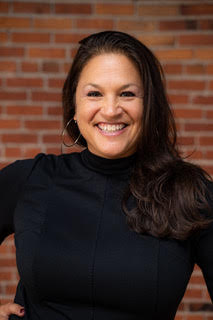 Marlo Martin is a director, choreographer, teacher, and producer in Seattle, WA. She finds fulfillment and joy in celebrating and practicing all that encompasses and defines dance. Martin founded and currently directs eXit SPACE, a center for dance education and performance opportunities for the beginning student through professional level dancer. Martin has grown eXit SPACE from a single room studio (2006) with two teachers into a 2900 square foot facility with three studio spaces, 14 faculty members, housing for local dance companies, and over 80 classes per week.
Marlo Martin is a director, choreographer, teacher, and producer in Seattle, WA. She finds fulfillment and joy in celebrating and practicing all that encompasses and defines dance. Martin founded and currently directs eXit SPACE, a center for dance education and performance opportunities for the beginning student through professional level dancer. Martin has grown eXit SPACE from a single room studio (2006) with two teachers into a 2900 square foot facility with three studio spaces, 14 faculty members, housing for local dance companies, and over 80 classes per week.While developing eXit SPACE Marlo has also continued to work as a choreographer. She has created works for her own company, oaklanDrive (2005-2009) and badmarmarDANCE (2010-2015). Since moving to Seattle in 2002 her work has been presented at numerous concerts and festivals including The Bridge Project Velocity Dance Center, the High Wire Series Seattle U, 12 Minutes Max On the Boards (2005, 2010, 2012), BASH theater, Redd Legg Dance, A Moving Conversation The Fremont Abbey, Evoke Dance Production's Full Tilt, Beyond the Threshold / Spotlight on Seattle (2011, 2013, 2015), the BOOST dance festival (2010-15), the Fall Kick Off Velocity Dance Center, NEXTfest NW Velocity Dance Center, self-produced full length tenSIDES (2012) and SPLIT BILL (2013), Cornish Dance Theater, Bellingham Rep Dance, Strictly Seattle (2013/2015), and Western Michigan University Dept. of Dance.
In 2016 Martin forged on to create a new artist's space called theNEST. It hosts major dance companies, workshops, classes, and events in the Greenlake neighborhood of Seattle. As a producer Marlo proudly presents the bi-annual BOOST dance festival, featuring PNW contemporary dance artists and companies alongside with the BOOSTmeUp Dance Festival for pre-professional dancers and schools.
Currently you can find Marlo teaching weekly technique classes at eXit SPACE while co-directing the pre-professional division, thePROGRAM . She has been a dance faculty member at Cornish College for the Arts. Ms. Martin is currently focusing on the development of NOD Theater in partnership with eXit SPACE and looks forward to doing her part to cultivate art, community, and positivity through dance in Seattle.
She is genuinely interested in sharing her vision and ideas through teaching and creating dance, by developing forums for the exploration and presentation of dance works, and by supporting and nurturing fellow dancers, artists, and director.
marlo@exitspacedance.com>>
Young Dancer Program Director
ADP Basic Series Program & Development Coordinator
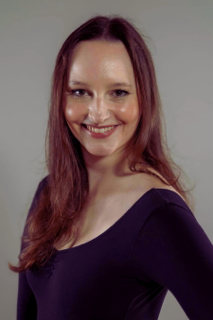 Miranda Chantelois (she/her) holds a BFA in dance from Cornish College of the Arts and a Master's of Education in Early Childhood Education from Eastern Washington University. As a student, Miranda performed in works by local and nationally-renowned artists including Kyle Abraham, Sidra Bell, Amy O'Neal, Walter Kennedy, and Jason Ohlberg and has since gone on to perform professionally for a wide variety of artists including Mike Esperanza, Deborah Wolf, Bennyroyce Royon, and Rachel Winchester. Her pursuit of visceral and emotive performance opportunities ultimately led her to join Marlo Martin's contemporary dance company, badmarmarDANCE, with whom she currently dances.
Miranda Chantelois (she/her) holds a BFA in dance from Cornish College of the Arts and a Master's of Education in Early Childhood Education from Eastern Washington University. As a student, Miranda performed in works by local and nationally-renowned artists including Kyle Abraham, Sidra Bell, Amy O'Neal, Walter Kennedy, and Jason Ohlberg and has since gone on to perform professionally for a wide variety of artists including Mike Esperanza, Deborah Wolf, Bennyroyce Royon, and Rachel Winchester. Her pursuit of visceral and emotive performance opportunities ultimately led her to join Marlo Martin's contemporary dance company, badmarmarDANCE, with whom she currently dances.Beyond performance, Miranda has had a versatile professional career in arts education, dance criticism, arts administration, and child advocacy, but has ultimately spent the past decade specializing in dance education and curriculum integration for preschool-aged children and dancers of all ages with varying support needs. Miranda has taught Dance for PD® as a Teaching Artist for Seattle Theater Group, co-taught for Pacific Northwest Ballet's Dance for All program serving high- support-needs-youth, and is a current Teaching Artist for PNB's community education department bringing arts integration to K-5 schools. She embeds adaptive practices into all of her work, including classes of typically-developing children and non-disabled adults. Her approach has been informed by the lived experiences of autistic and disabled adults; graduate courses; certifications in Autism Movement Therapy®, Youth Mental Health First Aid, and Youth Protection Advocates in Dance®; and training in physically adaptive dance, Dance for PD®, and Brain-Compatible Dance Education to name a few. Most notably, Miranda's full time role is at her dance home eXit SPACE, where she serves as the Young Dancer Program Director and Adult Basic Program Coordinator, managing communications and programming for hundreds of students each year in addition to teaching in the classroom. Alongside Artistic Director Marlo Martin, she works to enrich the Seattle dance community as a whole with learning and artistic exploration opportunities for children and professionals alike. A firm believer that dance is for everybody, Miranda seeks to cultivate an equitable community informed by neurodiversity-affirming practice and joy.
miranda@exitspacedance.com>>
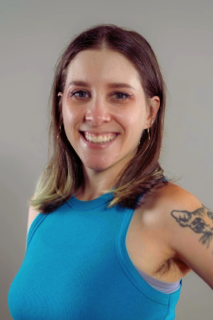 Annie St.Marie (he/she/they) is a dance artist from the greater Seattle area. They trained for eight years at the Pacific Northwest Ballet School and went on to graduate magna cum laude with their BFA in Dance from Cornish College of the Arts through the dance department's three year Accelerated Degree Program. Annie has been fortunate to dance in work by Bruce Wells, Wade Madsen, Alia Swersky, Bruce McCormick, Bruno Roque, and Danielle Agami. Annie is equally passionate about classical and contemporary ballet and spends their free time training in acrobatic dance styles.
Annie St.Marie (he/she/they) is a dance artist from the greater Seattle area. They trained for eight years at the Pacific Northwest Ballet School and went on to graduate magna cum laude with their BFA in Dance from Cornish College of the Arts through the dance department's three year Accelerated Degree Program. Annie has been fortunate to dance in work by Bruce Wells, Wade Madsen, Alia Swersky, Bruce McCormick, Bruno Roque, and Danielle Agami. Annie is equally passionate about classical and contemporary ballet and spends their free time training in acrobatic dance styles.
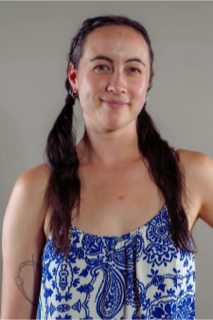 Bri Wilson (she/her) grew up in northern Michigan before earning her BFA in dance at the Alonzo King LINES Ballet BFA Program at Dominican University of California. Since moving to Seattle in 2018, she has performed for The Three Yells, The Gray, Maia Durfee, Elia Mrak, and others while teaching at various settings across the city including Velocity Dance Center, North Seattle College, and The Creative Dance Center. As an educator certified in Brain-Compatible Dance Education, Bri strives to provide students with a comprehensive movement and choreographic toolbox while encouraging their growth as whole human beings. She is thrilled to be teaching in the supportive, nurturing environment that is eXit SPACE. When she is not teaching or dancing, Bri enjoys biking, hiking, and swimming in the Pacific Northwest.
Bri Wilson (she/her) grew up in northern Michigan before earning her BFA in dance at the Alonzo King LINES Ballet BFA Program at Dominican University of California. Since moving to Seattle in 2018, she has performed for The Three Yells, The Gray, Maia Durfee, Elia Mrak, and others while teaching at various settings across the city including Velocity Dance Center, North Seattle College, and The Creative Dance Center. As an educator certified in Brain-Compatible Dance Education, Bri strives to provide students with a comprehensive movement and choreographic toolbox while encouraging their growth as whole human beings. She is thrilled to be teaching in the supportive, nurturing environment that is eXit SPACE. When she is not teaching or dancing, Bri enjoys biking, hiking, and swimming in the Pacific Northwest.
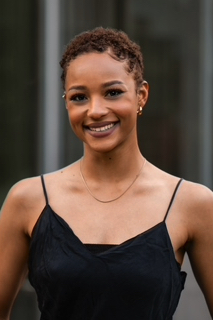 Movement artist DaeZhane Day emulates the blend between Seattle contemporary dance and Bay Area street hip hop. With a BFA from Cornish College of the Arts DaeZhane shares her hybrid form in and around the Seattle area and beyond. DaeZhane has set work for Seattle Shakespeare's Romeo and Juliet as well as performing in Intiman theatre's Black Navitiy last December as Mary. They have studied with artists like Melecio Estrella, Charolette Boye-Christensen, and Keyes Wiley, Rubberlegz, and more. DaeZhane has taught for Pacific Northwest Ballet, Whim Whim Contemporary Dance Center, Summer Dance Lab, and is currently on faculty at eXit Space School of Dance. DaeZhane hopes that her love of community and dance will further her expertise in her administration role at Cornish College of the Arts. You can find DaeZhane performing in Black Nativity again this December!
Movement artist DaeZhane Day emulates the blend between Seattle contemporary dance and Bay Area street hip hop. With a BFA from Cornish College of the Arts DaeZhane shares her hybrid form in and around the Seattle area and beyond. DaeZhane has set work for Seattle Shakespeare's Romeo and Juliet as well as performing in Intiman theatre's Black Navitiy last December as Mary. They have studied with artists like Melecio Estrella, Charolette Boye-Christensen, and Keyes Wiley, Rubberlegz, and more. DaeZhane has taught for Pacific Northwest Ballet, Whim Whim Contemporary Dance Center, Summer Dance Lab, and is currently on faculty at eXit Space School of Dance. DaeZhane hopes that her love of community and dance will further her expertise in her administration role at Cornish College of the Arts. You can find DaeZhane performing in Black Nativity again this December!
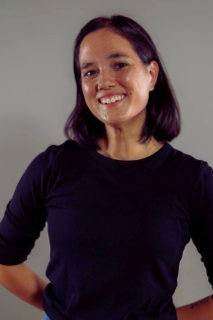 Hayley Keller (she/her) grew up as a gymnast and dancer in Grand Junction, Colorado before relocating to the PNW to continue her education in Dance and Political Science at the University of Oregon. She trained at Shawl Anderson Dance Center in Berkeley, California before finding her home here in Seattle in 2020. She has studied under and performed works set by Adam Parson, Mike Esperanza, Habib Iddrisu, Shannon Mockli, and Marlo Martin, among others, and spent three years dancing as a member of Dema, a West African Dance ensemble. Hayley seeks out community and authenticity in all parts of her life and is always working to bring those qualities to the spaces she inhabits.
Hayley Keller (she/her) grew up as a gymnast and dancer in Grand Junction, Colorado before relocating to the PNW to continue her education in Dance and Political Science at the University of Oregon. She trained at Shawl Anderson Dance Center in Berkeley, California before finding her home here in Seattle in 2020. She has studied under and performed works set by Adam Parson, Mike Esperanza, Habib Iddrisu, Shannon Mockli, and Marlo Martin, among others, and spent three years dancing as a member of Dema, a West African Dance ensemble. Hayley seeks out community and authenticity in all parts of her life and is always working to bring those qualities to the spaces she inhabits.
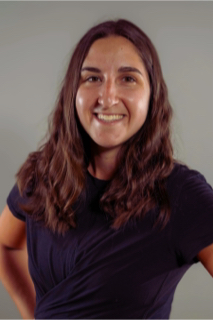 Lauren (she/her) grew up dancing in Calgary, AB, Canada, where she first fell in love with teaching through her studio's student-teacher education program. When she moved to Edmonton to complete her BA and BEd at the University of Alberta, she continued her dancing journey with MOD Contemporary Dance Movement. At this time, she also began teaching tap and jazz at Flexpointe Studios, where she taught for eight years. She also taught at a junior high school in Edmonton where she developed and implemented a beginner dance program for 7th-9th grade students. Lauren has also been a part of Viva Dance Company, a professional company that has performed in numerous events throughout Edmonton and beyond.
Lauren (she/her) grew up dancing in Calgary, AB, Canada, where she first fell in love with teaching through her studio's student-teacher education program. When she moved to Edmonton to complete her BA and BEd at the University of Alberta, she continued her dancing journey with MOD Contemporary Dance Movement. At this time, she also began teaching tap and jazz at Flexpointe Studios, where she taught for eight years. She also taught at a junior high school in Edmonton where she developed and implemented a beginner dance program for 7th-9th grade students. Lauren has also been a part of Viva Dance Company, a professional company that has performed in numerous events throughout Edmonton and beyond.
Since moving to Seattle in 2020, Lauren has continued to train and perform, as well as teach. She currently teaches Dance and P.E. at a middle school in Bellevue and also enjoys hiking, camping, and biking. In her classes, Lauren encourages dancers to explore, develop, and celebrate their individual artistic expression, while challenging them through strong and balanced technical training to reach their fullest potential.
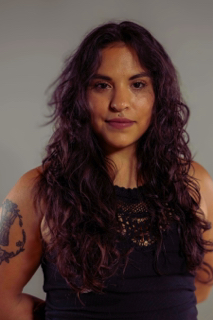 Nicole Flores (They/She) is a movement artist from Chicago Illinois. Holding a BFA from Columbia College Chicago, their midwest roots are sunken greatly into finding spaces where community can grow and flourish. After graduating in 2017, Nicole lived in Los Angeles full time, receiving secondary training from The American Musical and Dramatics Academy (AMDA). As her budding career continued to grow, Nicole was a scholarship recipient for the LA contemporary Dance Company's 2019 and 2021 Summer intensives, giving her the opportunity to perform as a Guest Artist in Genevieve Carson's work; "Ebba". Nicole joined Psychopomp Dance Theater in 2019 as a performing artist. They have been a co-facilitator for their 2021 and 2023 summer workshops as well as a close collaborator with Artistic Director, Shenandoah Harris. Now in bloom in Seattle since 2021, Nicole has truly found a home in the dance community here. Nicole has performed works by Dance Undercurrent, Coriolis Dance Collective, and Badmarmar DANCE, among others. Nicole was granted two residencies in January of 2023 through Velocity Dance and Coriolis Dance Collective. During these two separate but simultaneous residencies, Nicole created two iterations of "These Heavy Bones" - a work that deals with the weight that depression and anxiety holds on our bodies. Nicole hopes to combine these two iterations in the future, culminating in an evening length immersive experience. When Nicole is not dancing or choreographing they are also a certified personal trainer and is very passionate about how we can bring functionality and strength into our dance practices.
Nicole Flores (They/She) is a movement artist from Chicago Illinois. Holding a BFA from Columbia College Chicago, their midwest roots are sunken greatly into finding spaces where community can grow and flourish. After graduating in 2017, Nicole lived in Los Angeles full time, receiving secondary training from The American Musical and Dramatics Academy (AMDA). As her budding career continued to grow, Nicole was a scholarship recipient for the LA contemporary Dance Company's 2019 and 2021 Summer intensives, giving her the opportunity to perform as a Guest Artist in Genevieve Carson's work; "Ebba". Nicole joined Psychopomp Dance Theater in 2019 as a performing artist. They have been a co-facilitator for their 2021 and 2023 summer workshops as well as a close collaborator with Artistic Director, Shenandoah Harris. Now in bloom in Seattle since 2021, Nicole has truly found a home in the dance community here. Nicole has performed works by Dance Undercurrent, Coriolis Dance Collective, and Badmarmar DANCE, among others. Nicole was granted two residencies in January of 2023 through Velocity Dance and Coriolis Dance Collective. During these two separate but simultaneous residencies, Nicole created two iterations of "These Heavy Bones" - a work that deals with the weight that depression and anxiety holds on our bodies. Nicole hopes to combine these two iterations in the future, culminating in an evening length immersive experience. When Nicole is not dancing or choreographing they are also a certified personal trainer and is very passionate about how we can bring functionality and strength into our dance practices.
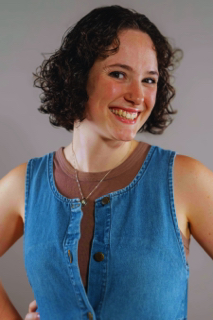 Rose Amlin (she/her) grew up dancing in Seattle and is an alumni of the program at exit space. She continued her education at the University of Washington, pursuing a dual degree in dance and psychology. There she furthered her training in modern, jazz, and ballet as well as street and club styles. She has performed in works by Dani Tirrell, Mike "Majinn" O'Neal, Alethea Alexander, Rachel Lincon, Roel Seeber, Amy Lambert, and many others. Rose has also found joy through dance in the vertical space and has participated in workshops with BANDALOOP in Oakland, CA. She is interested in blurring the lines between genera and has a great love for finding community and shared experiences through dance.
Rose Amlin (she/her) grew up dancing in Seattle and is an alumni of the program at exit space. She continued her education at the University of Washington, pursuing a dual degree in dance and psychology. There she furthered her training in modern, jazz, and ballet as well as street and club styles. She has performed in works by Dani Tirrell, Mike "Majinn" O'Neal, Alethea Alexander, Rachel Lincon, Roel Seeber, Amy Lambert, and many others. Rose has also found joy through dance in the vertical space and has participated in workshops with BANDALOOP in Oakland, CA. She is interested in blurring the lines between genera and has a great love for finding community and shared experiences through dance.
rose@exitspacedance.com>>
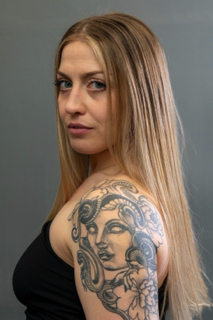 Tyra Rose (she/her), originally from Des Plaines IL, moved to Seattle in 2017 in pursuit of building on her dance performance, education and choreography experience. She graduated magna cum laude with honors in 2016 from Webster University with a BFA in dance. Tyra studied ballet, jazz, modern, hip hop, aerial and Thai classical in school and furthered her artistic interests with painting and other art forms. Her multimedia explorations culminated in an evening length performance collaborating with Corbin Hall and produced through ANNONYArts in St. Louis, MO. Tyra presented her own work in St. Louis at the Spring to Dance Festival and Artica Fest, in Seattle with RAW Artists and the Full Tilt Dance Festival. She is grateful for the performance opportunities she's had here, notably with Catapult Dance (Michele Miller), AJnC Dance Theater (Amy J. Lambert), Gender Tender (Fox Whitney) and The Three Yells (Veronica Lee-Baik). Besides creating, performing, and teaching, Tyra spends most of her free time with her two dogs going on long walks.
Tyra Rose (she/her), originally from Des Plaines IL, moved to Seattle in 2017 in pursuit of building on her dance performance, education and choreography experience. She graduated magna cum laude with honors in 2016 from Webster University with a BFA in dance. Tyra studied ballet, jazz, modern, hip hop, aerial and Thai classical in school and furthered her artistic interests with painting and other art forms. Her multimedia explorations culminated in an evening length performance collaborating with Corbin Hall and produced through ANNONYArts in St. Louis, MO. Tyra presented her own work in St. Louis at the Spring to Dance Festival and Artica Fest, in Seattle with RAW Artists and the Full Tilt Dance Festival. She is grateful for the performance opportunities she's had here, notably with Catapult Dance (Michele Miller), AJnC Dance Theater (Amy J. Lambert), Gender Tender (Fox Whitney) and The Three Yells (Veronica Lee-Baik). Besides creating, performing, and teaching, Tyra spends most of her free time with her two dogs going on long walks.
tyra@exitspacedance.com>>
• In every discipline hair should be secured away from the face and off the neck. Pony tails, buns, braids, your choice as long as it is secure! Keeping hair away from the face is important for safety, especially when turning or dancing next to others in class. Poorly secured hairstyles are disruptive to the learning process as unsecured hair can impair a dancer’s vision and loose pins can fall to the floor.
• When purchasing dance items online for class, be sure to pay attention to the sizing guides. Dance shoes and attire sizing can range greatly from street sizes and from brand to brand. We advise measuring your dancer properly to avoid making returns later.
How To Measure Your Dancer
• Please ensure that tights are clean and free of rips or tears; once shoes get holes in them… it’s time for another pair! You may want to consider ordering multiples of items like tights and leotards to cut down on your shipping costs and weekly laundry. ☺If purchasing new tights or shoes is not financially possible for your family, please contact us. We often have used shoes available for redistribution and can work with you to secure new tights, etc.
• Dancers should use a ‘DANCE BAG’ that is only used for their dance items so they can easily organize and keep track of their shoes and supplies. One with a designated space for a water bottle is ideal so they’re less likely to lose it!
• LABEL EVERYTHING. Shoes, leotards, tights, water bottles, bags… So many items get lost and left behind from week to week at the studio; having a label on the item helps us identify it and get it back to you easily.
• Pointe shoes for beginner pointe dancers should NOT be purchased until they are given guidelines by the teacher. Elastics and ribbons must be properly sewn to the pointe shoes once they are approved. A tutorial on how to properly sew pointe shoes will be distributed by the instructor.
• As weather turns colder in winter months, dancers are permitted to wear warm-up clothing at the beginning of class as long as it is form-fitting and dance or fitness specific. No hoodies or large, oversized items. Warm-up items should be removed after body temperature rises so range of movement is not affected and instructors can properly see and correct alignment.
Any combination and any color of leotard, tights, pants, tutu, or skirt
Black pants or leggings are needed for class
Ballet slippers, black tap shoes, and black jazz shoes are needed for class
White leotard of any acceptable style (*see examples below) and
pink, bronze or brown CONVERTIBLE tights (tights transition between cropped and footed)
or
white top
or
white, black, or grey top with black leggings or pants, ballet slipper
pants: click here for example
No shoes are needed, dancers learn in bare feet.
click here for examples
Shoes should not be worn outside of class; the oils and debris from outside damage our floors
pants: click here for example
or
white or black top, black jazz pants, black tap shoes
pants: click here for example
Examples of acceptable SOLID COLOR Leotards (no ruffles, jewels, or skirts attached):
• Tank Style
• Camisole Style
• Cap Sleeve>>
• Long Sleeve
• Ballet Slipper (child sizes)
• Ballet Slipper (adult sizes)
• Ballet Slipper (men’s sizes)>
• Girls Toddler Size Tights
• Girls Child Size Tights
• Ladies Adult Size Tights
• Boys Tights
• Mens Tights
• Dance Belts for mature male dancers
• Jazz Pants
• Jazz Shoes
Dancer Code of Conduct
- BE ON TIME - Dancers are expected to attend class weekly and to be punctual. Warm-up is conducted at the start of every class which prepares the body for physical activity. Missing warm-up could lead to an unnecessary injury so please make every effort to arrive on-time.
- BE TRUTHFUL - Honesty and Integrity are expected.
- BE RESPECTFUL - Dancers must participate within eXit SPACE rules and respect all teachers/staff/assistants/volunteers and their decisions. Respect all decisions and expertise from your teachers, and if you have an opinion to share, it’s best to do it in private before or after class.
- BE A FRIEND - Dancers will respect their fellow dancers, and will be friendly and welcoming to other dancers at the studio and in their classes. We encourage dancers to establish new friendships with their peers in an effort to build a sense of community, even at a young age.
- BE FOCUSED - Dancers must remain attentive in class and commit their attention to learning. We expect students not to distract, bully or harass other dancers.
- BE KIND - eXit SPACE is our home and its dancers are our family. Dancers must practice kindness, acceptance, and empathy towards their fellow students; intimidation and physical/verbal harassment of other dancers, faculty or staff will not be permitted. Cyber-bullying, which includes social media posts that reference directly or indirectly to a student, staff member, studio brand and/or any affiliations with the studio is also not permitted.
- BE PREPARED - Dancers must arrive in dress code, with hair properly secured and a water bottle for proper hydration.
- BE CLEAN - Street shoes must be removed upon entering all studios. All dancers must treat the studios, dressing areas, lobbies, and possessions of others with respect, care and consideration. Clean up after themselves, use trash receptacles, and neatly store their belongings in provided areas. No drinks, candy, gum or food allowed in studios or lobby areas. Water is permitted.
- The following behaviors are not allowed: theft or destruction of school property or the property of others, profanity or lewd behavior, sexual harassment or coercion, discrimination based on race, gender identity, or sexual orientation, self-destructive behavior, and any other illegal activities as defined by the City of Seattle and State of Washington.
- We do not allow any photography or filming of classes unless given express permission by a faculty or staff member.
Parent/Guardian Code of Conduct
- Parents are encouraged to support their child’s/children’s involvement in dance to help them get the most out of their eXit SPACE experience. Attend Parent Watch Week when possible, ask them to show you what new steps they’ve learned, or get them to spell the name of their favorite step!
- Parents will approach office staff or directors with concerns or questions. Please do not try to talk to teachers during class time or reach out to them on social media with studio questions. If you need to speak with your instructor, please send us an email and we can connect you.
- Parents/Caregivers will not engage in inappropriate conduct towards instructors, staff, other dancers and families and will refrain from acts of cyber-bullying, which includes social media posts that reference directly or indirectly to a student, staff member, studio brand and/or any affiliations with the studio.
- Parents will teach their children respect for other students, teachers, and dance styles, leading by example.
- Parents will encourage and guide their child to accept responsibility for their own performance and behavior.
On the occasion that repeated failure to comply with the Code of Conduct occurs, eXit SPACE reserves the right, at its discretion, to suspend, dismiss, or take disciplinary action on any student or parent/guardian/family member who breaks this code. If you witness any of the above actions, report them immediately to the Director. The Director will contact the parent or guardian to discuss the appropriate disciplinary actions, which may include but are not limited to: a probation period, suspension from the Young Dancer Program, and/or dismissal from the school.
As always, we are open to feedback, so if any requirements are unclear or concerning please send an email to info@exitspacedance.com.
Non-Discrimination Policy:
eXit SPACE School of Dance admits students of any race, color, sexual orientation, national and ethnic origin to all the rights, privileges, programs and activities generally made available to dance students. We do not discriminate on the basis of race, color, sexual orientation, national and ethnic origin in administration of our education policies, admissions policies, scholarship programs or any other programs.
Individualized Instruction: We work with dancers as individuals, embracing their uniqueness, creativity, and learning style with the understanding that every dancer is different in their needs, interests, and capabilities.
Financial Support: We are strongly committed to making dance opportunities available to as many students as possible regardless of ability to pay, prioritizing students of color. Need-based and merit-based scholarships as well as work-study options are available each season; please see the Scholarships & Financial Aid page for details.
Gender Identity & Sexual Orientation: We welcome dancers of all gender identities and sexual orientations. Our teachers and staff are committed to respecting preferred pronouns, dress code choices, and name changes without question. You are invited and encouraged to share your dancer’s preferred pronouns with us upon registration so that we can communicate them to their instructors or to communicate them directly to the instructor(s) yourself as you or your dancer feel most comfortable doing so.
Experience & Accessibility: We encourage dancers of all levels, abilities, and physical modalities to give our classes a try. We do our best to accommodate each dancer’s unique needs within the limits of our resources, studio features, staff expertise, student/teacher ratio, and other factors. If you or your child has specific learning or accessibility needs, please talk with the Director before registering to determine whether a particular class will be appropriate, and, if necessary, what the options are for classroom support and physically adaptive models. Please note that theNEST is not wheelchair accessible, but all other studios at eXit SPACE are; please contact us with questions.
Make sure you are getting important Young Dancer Program information
**NOTE: If you are not seeing the subscribe form, you may need to pause/disable your ad blocker
- New to eXit SPACE or no DSP Account? You will create an account for your dancer when you sign up.
- Current student with DSP Account? Use your DSP login to sign up for the summer program
- Cancellation Policy:
- Cancellations up to one month prior will be charged a 10% fee
- Cancellations up to two weeks prior will be charged a 25% fee
- No refunds for cancellations within two weeks of camp/workshop start.
- Create a NEW account on the DSP Exit Space Parent Portal (or login to existing account)
- Add your students
- Choose your dancer's classes
- Accept the waiver
- Pay tuition for each dancer
You can view it here
If you need assistance please contact the office by email or call during our office hours. Payment will be required at time of enrollment.
Saturday, December 7th | 7:00-8:30pm
NOD Theater | eXit SPACE
1621 12th Ave Seattle, WA 98122
Cost: Free RSVP
Please join select eXit SPACE faculty and guest speakers for a dialogue centered around dancing past high school. Our goal is to educate young dancers and their families on what is possible in the field of dance post-graduation, tools for researching collegiate dance programs, and the countless ways that dance can play a role in the life of a college or postgraduate dancer.
Faculty and guest speakers from widely ranging backgrounds (as educators, performers, directors, choreographers, producers, administrators, and more) will share their perspectives and experiences. We will discuss how dance can continue to foster a deeper connection to one’s self, be a place for joy and creativity, and support one's physical/mental health while serving as the pathway into a long and prosperous career. eXit SPACE will also share information on current training programs, summer intensities, auditions and more from around the country.
Ultimately, the hope is that this dialogue sparks honest and informed conversations between high school dancers and their caregivers about how dance can be a viable and fulfilling career. There will be ample time for questions and discussion.
Speakers Include:
- Vicki Watts - Past Cornish Dance Department Chair and current Artistic Director of The Moisture Fest
- Deb Wolf - Cornish Dance Department Professor of 30 years, choreographer, creator
- Marlo Martin - eXit SPACE Artistic Director, producer, choreographer, educator
- Tyra Rose - eXit SPACE faculty, professional dancer, performer, educator, choreographer
- Miranda Chantelois - eXit SPACE YDP Director, educator, outreach teaching artist, administrator, professional dancer, performer
- Hayley Keller - eXit SPACE faculty, professional dancer, performer
- Nicole Flores - eXit SPACE faculty, educator, professional dancer, performer, choreographer
We're thrilled to be offering two kids events this season to bring winter joy to young dancers and offer grownups a morning/night off.
Included:
- 3 hours of instruction with eXit SPACE Faculty at theNEST
- Holiday crafts
- Snack (AM camp) or pizza (PM camp)
Frozen Creative Dance Camp (3-5 yrs)
Monday, December 30
9am - 12pm
Instructor: Miss Miranda
Cost: $60
In this thematic, Frozen-inspired Winter Break Camp, dancers will adventure to Arandelle where they will march like Princess Anna, gallop like Sven, and spiral like snowflakes using physical storytelling and imagination-based learning. They can look forward to hearing their favorite Disney tunes and creating arts and crafts. Costumes safe for dancing are encouraged!
Sign up on DSP
Winter Wonderland Dance Camp & Pizza Party (6-10 yrs) – Jazz & Modern
Friday, December 27
4 - 7pm
Instructor: Miss Miranda
Cost: $60
Listen to holiday hits in this joyful, dual-style Winter Break Camp for elementary-aged dancers! Balancing creativity and imagination with a focus on strong technique, dancers will embody jazz and modern styles, learn thematic choreography, have a pizza party, and make winter crafts.
Sign up on DSP
